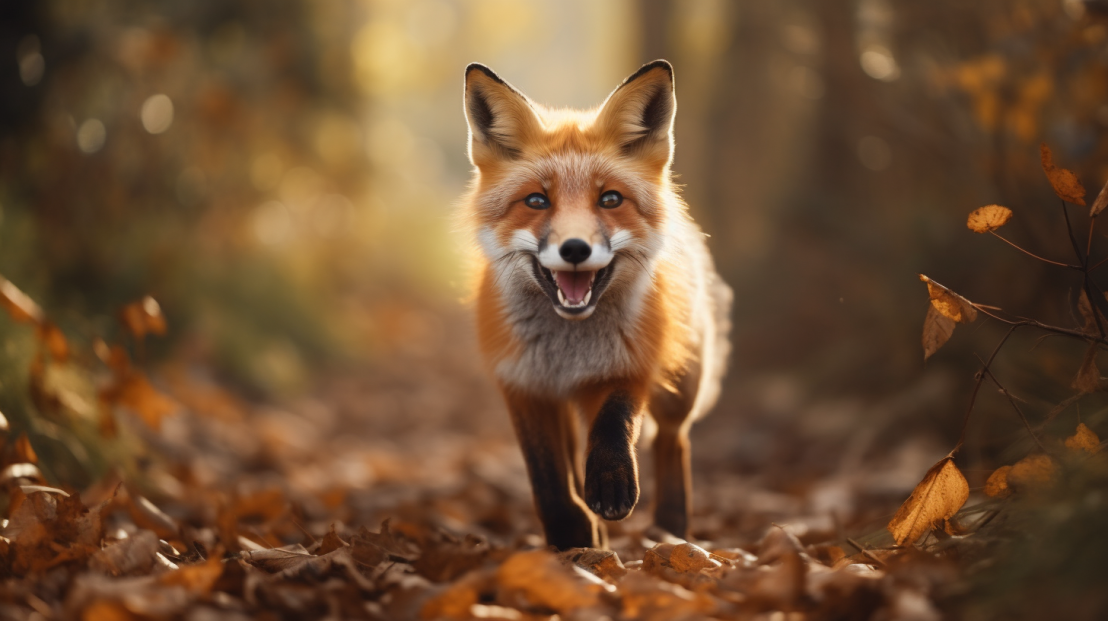Do Foxes Eat Snakes?
The short answer is, sometimes. Foxes do not seek out snakes as their primary source of food, but under certain circumstances they will consume reptiles, including snakes. We dive into more details on what some of those circumstances are and more information about foxes and their diets in general.
Foxes: Opportunistic Eaters
Foxes are fascinating creatures known for their opportunistic eating habits. As omnivores, they have a versatile diet that includes both plant matter and animal prey. However, their preferred food sources primarily consist of small mammals, birds, insects, and fruits. Despite being considered generalist carnivores, they also consume reptiles, including snakes, in certain circumstances.
Snake Consumption: Species and Environment Dependence
The eating behavior of foxes varies among different species and is influenced by their respective environments. For instance, the red fox (Vulpes vulpes), one of the most widespread fox species, displays dietary flexibility depending on its habitat. In areas with abundant small mammal populations, red foxes tend to primarily feed on mice, voles, and rabbits. However, when other prey sources are scarce, they may resort to hunting and consuming reptiles such as snakes.
The gray fox (Urocyon cinereoargenteus), another commonly found species, is known for its affinity towards fruit and plant material but also consumes various small prey items including snakes when available. Other fox species, such as the arctic fox (Vulpes lagopus) and the fennec fox (Vulpes zerda), have specific dietary preferences that may not include snakes as a significant food source.
Understanding the interaction between fox species and their environments is crucial in determining the likelihood of snakes being a substantial part of their diet. It is essential to note that the presence or absence of snakes in a fox’s diet can vary not only between species but also within their respective geographical ranges.
Importance of Understanding Fox-Snake Interactions
The relationship between foxes and snakes is of interest to researchers and wildlife enthusiasts due to its ecological significance. As both predators and prey, these two organisms have shaped each other’s behavioral and evolutionary adaptations through a natural rivalry spanning thousands of years.
The predation of snakes by foxes can impact the local ecosystem. For instance, foxes can help control the population of venomous snakes in certain regions, thus providing a benefit for human safety and the overall balance of the ecosystem. Understanding the dynamics of this predator-prey relationship can provide valuable insights into the functioning of ecological communities.
By studying the eating habits of foxes and their interactions with snakes, researchers can gain a deeper understanding of the complex web of interactions within ecosystems. It also aids in formulating effective conservation strategies for both foxes and snake species.
Fox Species and Snake Consumption
Fox Diversity and Diet Variation
Foxes are a diverse group of mammals, with notable species found in various regions around the world. Each species has its preferred food sources, which can vary significantly depending on their habitats. Let’s explore some of the different fox species and their dietary preferences:
1. Red Fox (Vulpes vulpes)
- Habitat: Found in Europe, Asia, and North America.
- Diet: Primarily consists of small mammals like mice, voles, and rabbits, but they can also consume reptiles, including snakes.
2. Gray Fox (Urocyon cinereoargenteus)
- Habitat: Native to North and Central America.
- Diet: Known for their fruit-eating habits. However, they also consume a variety of small prey items, such as snakes.
3. Arctic Fox (Vulpes lagopus)
- Habitat: Found in Arctic regions.
- Diet: Mainly consists of small mammals, birds, fish, and insects. Snakes are not a significant part of their diet.
4. Fennec Fox (Vulpes zerda)
- Habitat: Native to the Sahara Desert in North Africa.
- Diet: Primarily feeds on insects, small rodents, and plants. Snakes are not a prominent food source for fennec foxes.
Snake Consumption by Foxes
While snakes may not be the primary prey for all fox species, they are known to be consumed under specific circumstances. Foxes are efficient predators capable of capturing and eating small reptiles like snakes. However, the frequency of snake consumption by foxes varies based on factors like availability and competition with other prey items.
In regions where there is an abundance of small mammals, such as mice or rabbits, foxes are more likely to focus on these food sources. However, during periods when other prey items are scarce, foxes may turn to snakes as an alternative food source. This opportunistic behavior allows foxes to adapt to changing environmental conditions and find sustenance when their preferred food is limited.

Factors Influencing Fox Snacking Choices
The decision-making process of foxes when it comes to choosing between snakes and other food sources is influenced by several factors. Some key factors include:
1. Availability of Other Prey
- When other prey items like small mammals or birds are abundant, foxes are less likely to rely on snakes for sustenance.
- Foxes prefer food sources that are more accessible and provide greater nutritional value.
2. Personal Preference
- Foxes may have individual preferences for certain food items, which can influence their choices.
- This preference can be shaped by experience, genetic factors, and even cultural learning within fox populations.
3. Habitat and Hunting Techniques
- The environment in which foxes reside can impact their hunting techniques and food choices.
- In habitats with dense vegetation or rocky terrain, it may be more challenging for foxes to capture snakes compared to other small mammals.
Understanding the factors that influence foxes’ food choices is essential for studying their overall dietary preferences, including the consumption of snakes. By considering these factors, researchers can gain insights into the complex interactions between foxes and their environment.
In the next section, we will explore the natural rivalry between foxes and snakes and discuss the benefits and risks associated with snake consumption for foxes.
The Prey-Predator Relationship
Foxes vs. Snakes: A Natural Rivalry
Foxes and snakes have a long-standing natural rivalry shaped by their predator-prey relationship. Foxes, being predators, hunt and consume a variety of small prey items, including snakes. The interaction between these two organisms has significant implications for both populations and the overall functioning of ecosystems.
Snakes possess various defensive mechanisms to protect themselves from predators like foxes. Their ability to slither quickly, venomous bites, and camouflage adaptations make them formidable opponents. Foxes, on the other hand, have evolved certain adaptations to overcome these challenges and successfully capture snakes.
Benefits and Risks of Snake Consumption for Foxes
The consumption of snakes can have both benefits and risks for foxes. Let’s explore these factors:
Benefits:
- Control of Venomous Snakes: Foxes can help regulate the population of venomous snakes in certain regions. By consuming these snakes, foxes indirectly contribute to human safety and the balance of the ecosystem.
- Nutritional Value: Snakes can be a rich source of nutrients for foxes. They provide essential proteins and fats that contribute to the overall health and survival of fox populations.
Risks:
- Venomous Snake Bites: While foxes are equipped to handle venomous snake bites to a certain extent, there is still a risk associated with consuming venomous snakes. However, foxes have developed behavioral and physiological adaptations to minimize such risks.
- Competition with Other Prey: Depending on the availability of other prey items, consuming snakes may involve a trade-off. Foxes need to carefully balance their food choices to ensure they meet their nutritional requirements without compromising their overall hunting success.
Understanding the benefits and risks associated with snake consumption allows us to appreciate the role foxes play in regulating snake populations and maintaining the ecological balance. Additionally, it aids in formulating effective conservation strategies and managing potential human-wildlife conflicts.
Hey there, fellow nature enthusiasts! I’m Mark Gray, the passionate owner of OutdoorAnimals.com, a hub dedicated to uncovering the incredible world of outdoor animals. Whether you’re a hiker, a four-wheeler, or just someone who revels in the beauty of the great outdoors, you’re in the right place. I seek to understand all varieties of animals, from the great elk to the simple mouse, my goal is to write and share this knowledge with the public.

